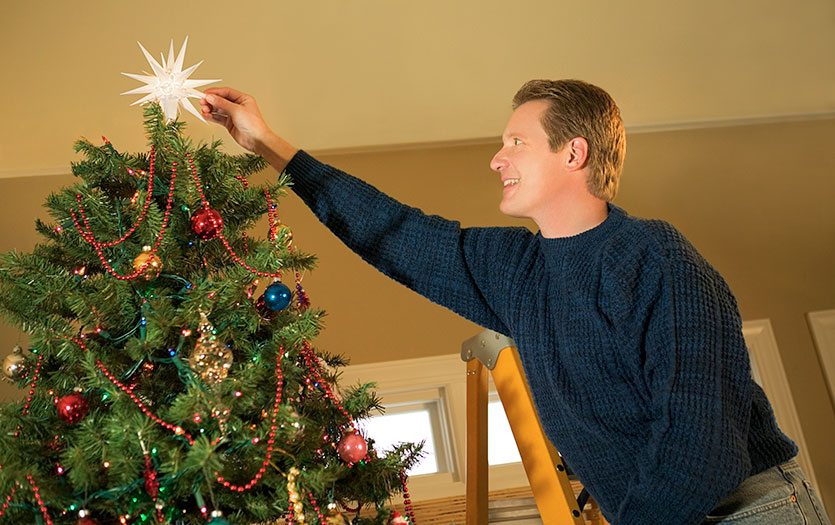
As we age, our muscles weaken and our reflexes slow down, making it harder to regain our balance. Seniors who have trouble with balance are more likely to fall, which can result in injuries and even death. According to the Centers for Disease Control and Prevention (CDC), falls among those ages 65 and older caused more than 36,000 deaths in 2020, making it the leading cause of injury death for this age group.
However, you can help yourself stay strong, improve your balance and prevent falls with regular physical activity. Regular exercise doesn’t need to be formal, either. There are many helpful activities you can do in your own home.
Warm-up exercises
Before starting your strength and balance exercises, it’s important to warm up your body. To get started, stand next to the wall, sink or countertop. Or, if you prefer, you can sit in a sturdy, straight-backed chair.
- Breathe in and out – Breathe in deeply through your nose. Lift your arms above your head and stretch. Lower your arms and breathe out.
- Shoulder rolls – Gently rotate your shoulders up to the ceiling, backward and down. Then try this movement in reverse. Gently rotate your shoulders up to the ceiling, forward and down.
- Calf stretches while you stand or sit
- To stretch your calves while standing, stretch one leg behind you, with your foot flat on the floor and your toes facing forward. Gently bend your front knee until you feel a stretch in your calf. Hold the stretch for 15 to 30 seconds. Repeat 2 to 4 times with each leg.
- To stretch your calves while sitting down, use a towel. Place your leg out in front of you with your heel on the floor. Hold both ends of the towel and loop the middle of the towel under the ball of your foot. Gently pull the ends of the towel toward you while keeping your knee as straight as you can. Hold the stretch for 15 to 30 seconds. Repeat 2 to 4 times with each leg.
- March in place – Stand with a chair in front of you and a wall behind you. If you start to fall, you can use them for support. Standing in a corner will also work. Stand with your feet slightly apart (as you normally stand) and your arms at your side. March in place, lifting your knees high toward the ceiling.
Strength exercises
After completing your warm-up exercises, if you’re feeling comfortable, you can start working on building your strength. For these exercises, stand up straight and use a counter or sturdy chair for support. Start off easy, completing each exercise just a few times. Then, as you feel stronger, you can work up to doing each movement 8 to 12 times.
- Leg bends – Bend one knee so your foot comes up behind you and is level with your knee. Slowly lower your foot to the floor. Repeat, using the other leg.
- Knee bends – Hold on to the back of your chair. Stand with your knees relaxed and your back straight. Your knees should face the same direction as your toes. Slowly bend your knees. Then raise your body by straightening your knees.
- Heel raises – Rise up onto your toes. Hold for a few seconds. Slowly lower your heels to the floor.
- Leg lifts – Hold on to the back of your chair. Keeping your legs straight, lift one leg a few inches to the side. Hold for a few seconds. Slowly lower your leg. Repeat on the other side.
- Sit-to-stand exercise – Sit in your chair, with the chair against a wall. Stand up without using your hands. If this is too hard, start by using a pillow on the chair until you get stronger.
Before beginning any type of exercise routine, it’s important to first speak with your healthcare provider. Those who are enrolled in the Medicare health insurance program for more than one year are entitled to an annual wellness visit – at no additional cost to you. You can find more information about these visits here.
If you're interested in establishing care with a Parkview provider,?call our 24/7 scheduling center at 877-PPG-TODAY or visit parkview.com/findcare.
Copyrighted material adapted with permission from Healthwise, Incorporated. This information does not replace the advice of a doctor.



